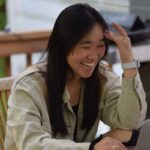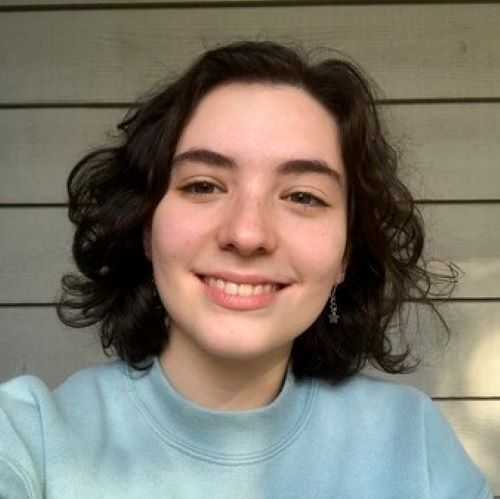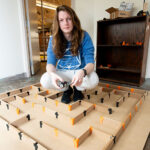
I.S. builds case for accessible sustainable housing

Jen Mynard ’23 believes making sustainability more accessible to everyone will be “the issue of the coming century as climate change threatens all.” The environmentally savvy, art history and environmental studies major understands that price barriers in every field from clothing to organic food make it difficult for many people to choose environmentally friendly options.
At The College of Wooster, Mynard developed an Independent Study to determine whether sustainable housing could be affordable. Using affordability standards for Wooster, Ohio, she designed a house that would limit its impact on the environment yet be economically accessible and enjoyable for the user. The design included techniques such as prefabrication, which creates pieces of the build off-site, and methods such as solar gain to reduce energy needs and energy bill costs.
“My time at Wooster gave me ample opportunity to hone my understanding of academic research and develop my writing skills. Although I was nervous because I had never completed a project of that scale before, I was prepared for what lay ahead thanks to the work I had done for three years developing a critical approach to research.”
—Jen Mynard ’23, I.S. title: A Home for People and Planet: Assessing the Feasibility of Sustainable Affordable Housing by Designing a Proof-of-Concept
“There are so many ways to reduce the footprint of a building that currently aren’t part of mainstream architectural teachings,” Mynard said. “I have learned that sustainable design can be made affordable by choices coming from form rather than integrating expensive technology.” Additional detailed planning and diversification would be necessary to expand the scope of the project. “With more research and time, this model could be adapted to fit various climates and settings,” she said.
The project tested her ability to learn new skills. As an art history student rather than a studio art major, she did not have much experience in designing her own creations. She learned Sketchup, a 3-D modeling software, to bring her ideas to life. She also synthesized large amounts of data into new solutions for the problems she saw. Due to the scale of the project, Mynard’s literature review touched on fields of sustainability, design, architecture, history, technology, and psychology. “I had never before parsed through so much information to create meaningful and concrete ideas,” she said.
Throughout the I.S. process, Mynard’s mentors, John Siewert, associate professor of art and art history, and Susan Clayton, Whitmore-Williams Professor of Psychology, helped her focus the topic “into something manageable for a paper this size.” They encouraged her to refine her thoughts and consider how to best convey the research to others. She also benefited from the writing and research opportunities the College gave her prior to starting her I.S. “My time at Wooster gave me ample opportunity to hone my understanding of academic research and develop my writing skills,” she said. “Although I was nervous because I had never completed a project of that scale before, I was prepared for what lay ahead thanks to the work I had done for three years developing a critical approach to research.”
Mynard chose to attend Wooster in part because her mother (Susan Copeland ’82) is an alumna. “I knew that Wooster would provide the interdisciplinary liberal arts experience I was looking for, especially since they had just added an environmental studies program, my desired major,” she said. Beyond Wooster, Mynard hopes to work with people, preferably within the environmental sector, in a hands-on, semi-creative job where she can constantly be learning.
Posted in Independent Study on May 18, 2023.
Related Posts
Related Areas of Study
Environmental Studies
Natural sciences, social sciences, and humanities courses combine for those who want to be part of environmental solutions
Major MinorArt - Art History
Explore the cultural and historic significance of art and artists while building research and analytical skills.
Major Minor

